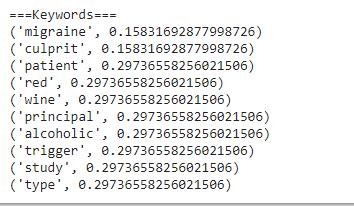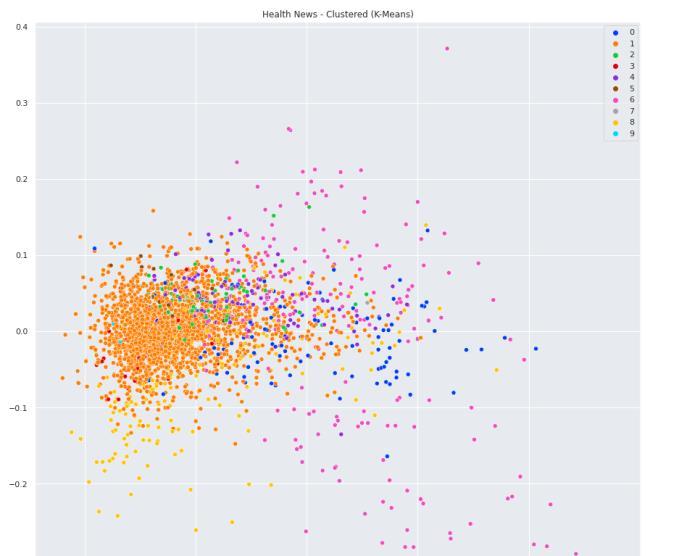
2 minute read
This paper is organized as follows. Section 2 explains the purpose of the proposed plan.Then the Literature Surveyin Section 3. Then the three main functions of the proposed program are described which tells us of text preparation, corpus clustering and news recommendationin Section 4,5 and 6 respectively. The flow diagram is madein Section where the working is explained. Finally, aconclusion is made
Volume: 08 Issue: 05 | May 2021 www.irjet.net p-ISSN: 2395-0072
Following are the list of keywords extracted using yake –
Advertisement
Fig 5.Keywords extracted using yake
YAKE gives better results than all of our above used algorithms for keyword extraction.
So, we are going to use yake for our model preparation in our system for better and accurate keyword extraction from news articles.
6. CORPUS CLUSTERING
Using the algorithm Mini Batch as a Classifier Stochastic gradient descent is the dominant method used to train deep learning models.
Gradient descent is an optimization algorithm which is mostly used for finding the weights or coefficients of machine learning algorithms.
It works in such a way wherethe model makespredictions on training data and using the error on the predictions to update the model in such a way as to reduce the error.
The goal of the algorithm is to find model parameters (e.g. coefficients or weights) which will reduce and henceforth minimize the error of the model on the training dataset. It does this by makingcertainchanges to the model that moves it along a gradient down toward a minimum error value. Hence, it got its name as “gradient descent.” Batch gradient descent is a slightvariation of the gradient descent algorithm that calculates the error for each example in thetraining dataset, but only updates the model after all trainingexamples have been evaluated.
One completion of cycle through the entire training dataset is called atraining epoch.
Mini-batch gradient descent is another variation of the gradient descent algorithm that divides and splits the training dataset into small and equal batches that are used to calculate model error and update model coefficients. During implementation it may choose to sum the gradient over the mini-batch which will further reducethe variance of the gradient.
Mini-batch gradient descent triesto find a balance between the robustness of stochastic gradient descent and the efficiency of batch gradient descent. It is the most common implementation and very helpful way of using of gradient descent and it is also used in the field of deep learning.
RESULTS
Since, from the above four extraction algorithms, Yake is the most accurate algorithm giving better keywords and successful results.
Using the Principal component analysis (PCA) to decompose the data in project it toa lower dimensional space, we get clusters arranged with the help of corpus clustering with relative frequency keywords extracted from our summary.
Fig 6.Cluster of our Keyword Extracted Corpus
Figure 6 shows us the K Means Cluster of our Yake algorithm generated keywords.
And figure 7 shows us the visualization of K means Cluster of Yake algorithm generated algorithms in 3D for a better visualization.



